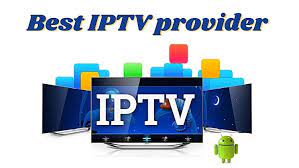Introduction:
In recent years, the landscape of television and video content consumption has undergone a significant transformation, thanks to the emergence of Internet Protocol Television (IPTV) services. IPTV has revolutionized how people access and experience best iptv, offering a more flexible and personalized viewing experience. In this article, we will delve into the world of IPTV services, exploring what they are, how they work, and the key benefits they bring to consumers.
What is IPTV?
IPTV, or Internet Protocol Television, is a technology that delivers television content over the Internet rather than through traditional cable or satellite services. This innovative approach allows users to stream television channels and on-demand content using their internet connection. Unlike traditional broadcasting methods, IPTV relies on a two-way communication system, enabling users to interact with the content in real-time.
How Does IPTV Work?
IPTV operates by sending television signals over an internet connection using the Internet Protocol (IP). The process involves converting traditional television signals into digital data packets that are then transmitted over the internet and reassembled at the user’s end. This method enables users to access live television channels, on-demand content, and interactive features through various devices, including smart TVs, streaming devices, and smartphones.
Key Components of IPTV Services:
- Content Delivery Network (CDN): CDNs play a crucial role in IPTV by optimizing the delivery of content. They help reduce buffering and latency issues, ensuring a smoother streaming experience for users.
- Middleware: Middleware acts as the bridge between the user interface and the content delivery system. It facilitates the interaction between users and the IPTV services, allowing for features like electronic program guides (EPGs) and on-screen menus.
- Set-Top Boxes (STBs): STBs are devices that connect to a user’s television and facilitate the reception of IPTV signals. These devices decode the digital data packets and display the content on the user’s screen.
Benefits of IPTV Services:
- Flexibility and Customization: IPTV services offer users the flexibility to choose the content they want to watch and when they want to watch it. This level of customization is particularly appealing in a world where on-demand content is increasingly popular.
- Interactive Features: IPTV allows for interactive features such as video-on-demand (VOD), catch-up TV, and interactive advertising. Users can engage with content in real-time, enhancing their overall viewing experience.
- Cost-Effectiveness: IPTV services often provide cost-effective alternatives to traditional cable or satellite TV subscriptions. Users can choose from a variety of packages that suit their preferences and budget.
- Multi-Device Accessibility: IPTV services can be accessed on various devices, including smart TVs, computers, tablets, and smartphones. This versatility ensures that users can enjoy their favorite content wherever they are.
Conclusion:
IPTV services have undoubtedly transformed the way we consume television content, offering a more personalized, flexible, and interactive experience. As technology continues to advance, IPTV is likely to play an increasingly significant role in shaping the future of entertainment. Whether you are a cord-cutter looking for alternatives or simply seeking a more tailored TV experience, exploring IPTV services could be the key to unlocking a world of entertainment possibilities.

More Stories
What Injuries Do New York Car Accident Doctors Treat? A Comprehensive Overview
MetaMask: The Gateway to the Decentralized Web
The Salt Trick: A Surprising Yet Powerful Solution